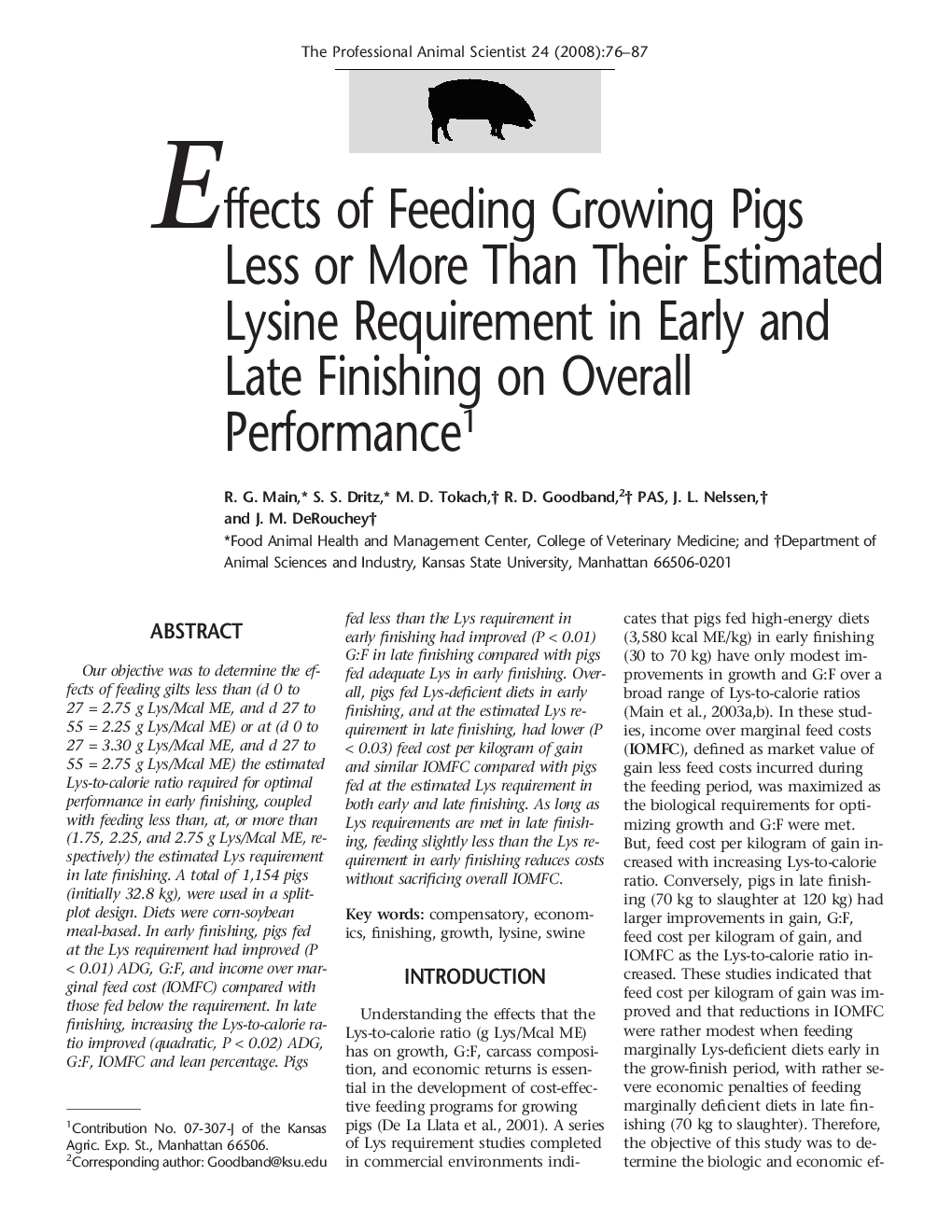| Article ID | Journal | Published Year | Pages | File Type |
|---|---|---|---|---|
| 2454517 | The Professional Animal Scientist | 2008 | 12 Pages |
Abstract
Our objective was to determine the effects of feeding gilts less than (d 0 to 27 = 2.75Â g Lys/Mcal ME, and d 27 to 55 = 2.25Â g Lys/Mcal ME) or at (d 0 to 27 = 3.30Â g Lys/Mcal ME, and d 27 to 55 = 2.75Â g Lys/Mcal ME) the estimated Lys-to-calorie ratio required for optimal performance in early finishing, coupled with feeding less than, at, or more than (1.75, 2.25, and 2.75Â g Lys/Mcal ME, respectively) the estimated Lys requirement in late finishing. A total of 1,154 pigs (initially 32.8 kg), were used in a split-plot design. Diets were corn-soybean meal-based. In early finishing, pigs fed at the Lys requirement had improved (P < 0.01) ADG, G:F, and income over marginal feed cost (IOMFC) compared with those fed below the requirement. In late finishing, increasing the Lys-to-calorie ratio improved (quadratic, P < 0.02) ADG, G:F, IOMFC and lean percentage. Pigs fed less than the Lys requirement in early finishing had improved (P < 0.01) G:F in late finishing compared with pigs fed adequate Lys in early finishing. Overall, pigs fed Lys-deficient diets in early finishing, and at the estimated Lys requirement in late finishing, had lower (P < 0.03) feed cost per kilogram of gain and similar IOMFC compared with pigs fed at the estimated Lys requirement in both early and late finishing. As long as Lys requirements are met in late finishing, feeding slightly less than the Lys requirement in early finishing reduces costs without sacrificing overall IOMFC.
Related Topics
Life Sciences
Agricultural and Biological Sciences
Animal Science and Zoology
Authors
R.G. Main, S.S. Dritz, M.D. Tokach, R.D. PAS, J.L. Nelssen, J.M. DeRouchey,
